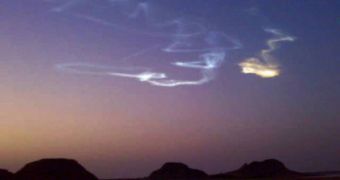One of the most famous asteroids was, for the scientific community, a space rock known as 2008 TC3, which was among the first to be scientifically observed as it entered the Earth's atmosphere, and burned down on descent. It was first spotted in 2008, and tracked until there was nothing left of it. Its surface and shape were very peculiar, and astronomers inferred that it must have been separated from a much larger cosmic object. Oddly enough, astronomers now report, the space rock had signs of a number of amino-acids, which are the precursors of life, Wired reports.
The new research, which combines the results of astronomical observations performed on the asteroid, were presented at the annual meeting of the American Astronomical Society’s Division for Planetary Sciences, on October 5. The rock crashed in northern Sudan, but it was first tracked down about 19 hours before it started passing through the Earth's atmosphere. As it disintegrated, the larger rock formed several meteorites, which then scattered across the planet's surface, without causing troubles.
Expert Peter Scheirich, from the Czech Academy of Sciences, in Ondrejov, had the patience to observe small flickers of light in the trail that the asteroid left behind while passing through the air. Together with samples collected from the impact sites, these data helped him and his team reconstruct the shape and overall properties of 2008 TC3, before it reached our planet. The scientist said that the description that best matched the rock was that of a flattened loaf of bread.
“The discovery of amino acids in [2008 TC3] provides additional support for the idea that organic matter delivered by asteroids could have seeded the early Earth with the raw ingredients for life,” NASA Goddard Space Flight Center expert Daniel Glavin, from Greenbelt, Maryland, explains. Over the past few years, the numbers of scientists who believe that the first ingredients for life may have gotten here via asteroids and comets have been constantly increasing. “The big mystery now is how did these complex organic compounds survive such high temperatures?” the expert adds.

 14 DAY TRIAL //
14 DAY TRIAL //